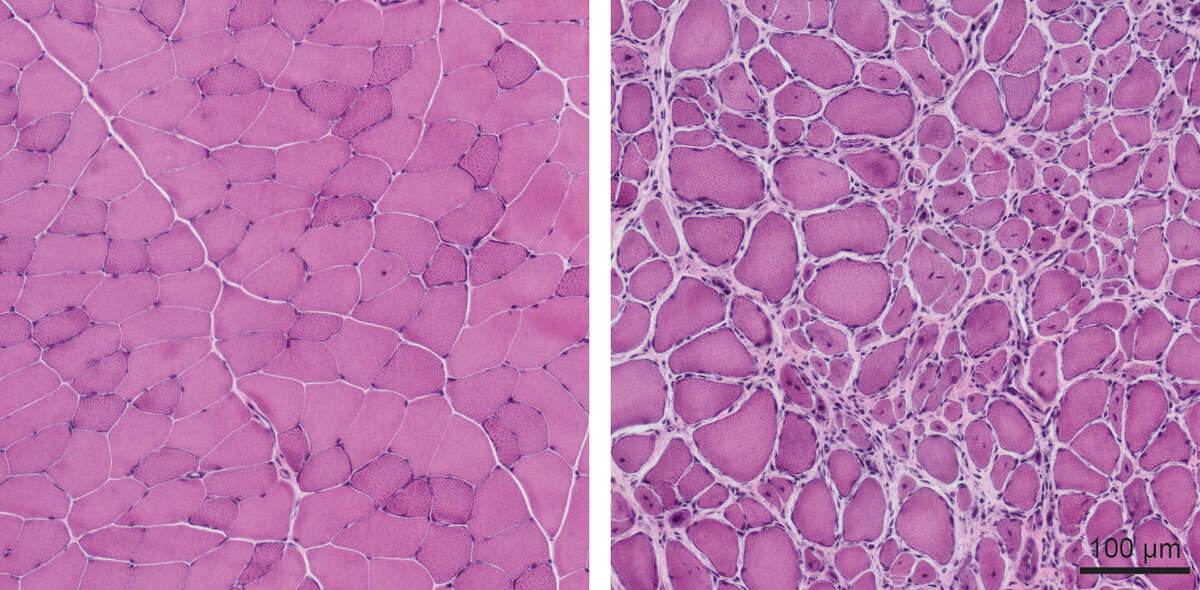Prof. Markus Rüegg on neuromuscular diseases
Simply taking a breath – impossible without muscles. People who suffer from neuromuscular diseases are very aware of this fact. Markus Rüegg investigates these diseases; their causes and how genetic defects affect the muscle cells.
How many muscles do we have and what is their function?
There are about 650 different muscles in the human body. Our lives would be unthinkable without them. Not only do we need them to move our arms and legs but also to be able to speak, breathe and even for every time we blink our eyes.
What causes neuromuscular diseases?
In most cases, the disorder results from a genetic defect and already appears in childhood. The disease is usually chronic and progressive, deteriorating with each day that passes. Many of the individuals affected do not survive past childhood.
Where does the problem lie?
The genetic mutations affect the proteins that are important for the stability of the muscle scaffold. As a result, the muscle fibers become unstable and susceptible to damage. Finally, they degenerate completely.
How common are such disorders?
Neuromuscular diseases belong to the rare diseases. This means that not more that 5 out of 10,000 people are affected. Despite their rarity, there are about 100 different forms of neuromuscular diseases.
How do the forms differ?
These diseases can be roughly divided into three groups: those where the neurons responsible for movement, called motor neurons, are affected; those where the junction between the motor neurons and muscle are defective; and those where the muscle fibers themselves are impaired. Duchenne muscular dystrophy is one of the most common genetically inherited neuromuscular disorders. It only affects males and is already apparent soon after birth.
How are these diseases treated?
Currently, physicians can only treat the symptoms. The aim of the therapy is to alleviate pain and muscle cramping as well as reduce breathing and swallowing difficulties. However, there is hope that in the future gene technology methods could be used to treat the cause of the disease. The first promising drugs have already been developed. This includes the medication Raxone®, produced by Santhera, for treating Duchenne muscular dystrophy.
Which new approaches to therapy have been provided by your research?
In one of our recent studies, we could demonstrate that two designed proteins can stabilize and strengthen the unstable cell scaffolding of the muscles in congenital muscular dystrophy. In the mouse model, treatment with these proteins increases life expectancy more than fivefold. Although this drug does not cure the disease, there is the great hope, that such a treatment could significantly improve the life expectancy and quality of life of the patients.



